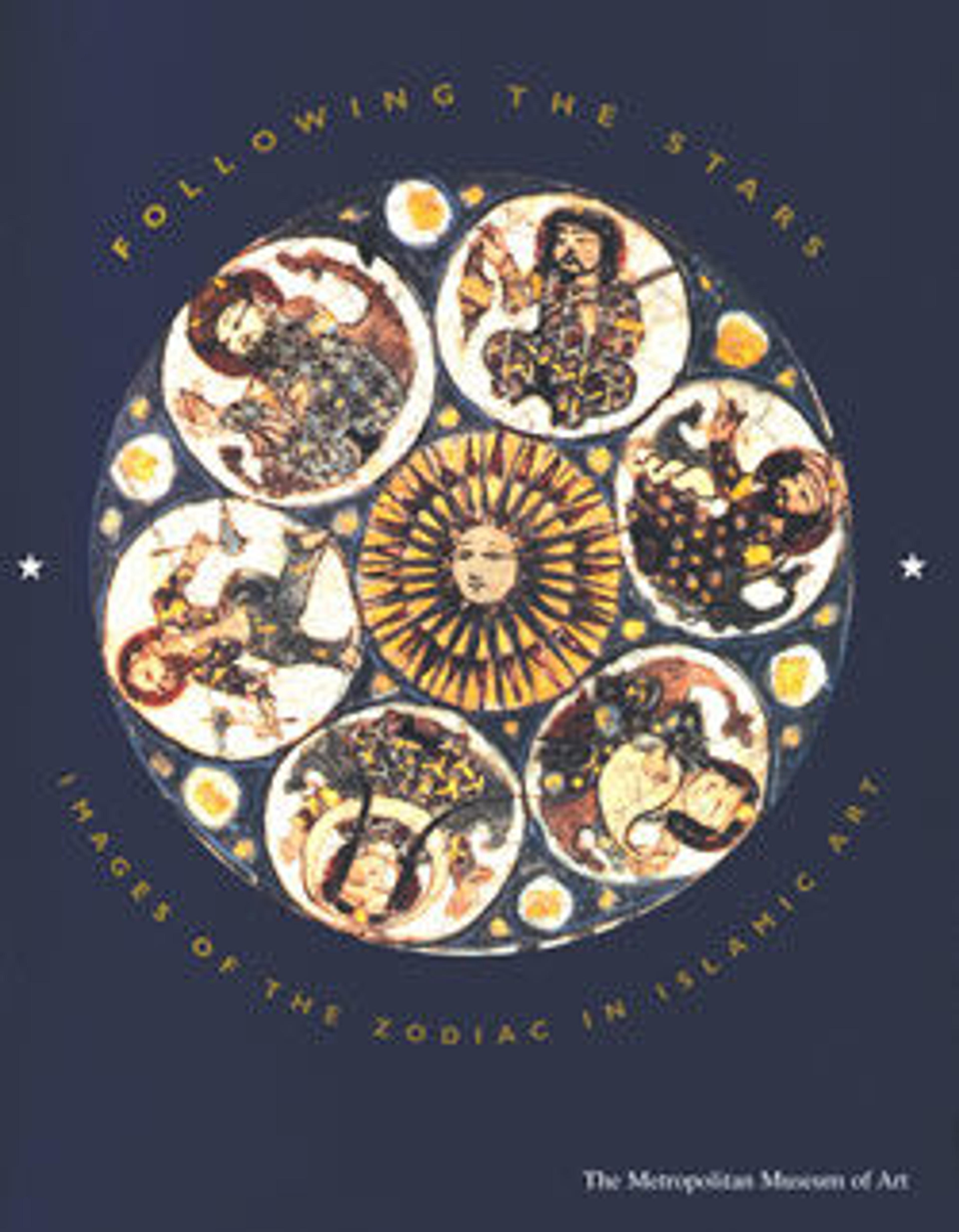Bowl
This bowl combines the most distinctive features of lusterware produced in Kashan: moon-faced figures; poetry in naskhi calligraphy; and a covering of spiral marks that fill the areas between the decorative motifs. In addition, the outermost decorative band includes medallions with all twelve signs of the Zodiac. Capricorn (al-jady, "the kid"), is depicted as a small goat in profile. Like the other Zodiac signs that are represented as animals, such as Aries and Taurus, when shown with its Planetary Lord, the personification of the planet, in this case Saturn, sits astride Capricorn.
Artwork Details
- Title: Bowl
- Date: 13th century
- Geography: Attributed to Iran, Kashan
- Medium: Stonepaste; overglaze luster-painted on an opaque white glaze
- Dimensions: H. 3 3/4 in. (9.5 cm)
Diam. 8 1/16 in. (20.5 cm) - Classification: Ceramics
- Credit Line: Purchase, Edward C. Moore Jr. Gift, 1927
- Object Number: 27.13.9
- Curatorial Department: Islamic Art
More Artwork
Research Resources
The Met provides unparalleled resources for research and welcomes an international community of students and scholars. The Met's Open Access API is where creators and researchers can connect to the The Met collection. Open Access data and public domain images are available for unrestricted commercial and noncommercial use without permission or fee.
To request images under copyright and other restrictions, please use this Image Request form.
Feedback
We continue to research and examine historical and cultural context for objects in The Met collection. If you have comments or questions about this object record, please contact us using the form below. The Museum looks forward to receiving your comments.
